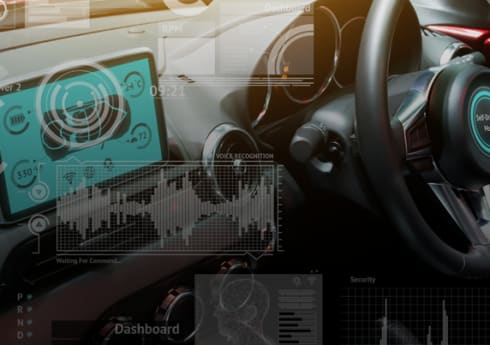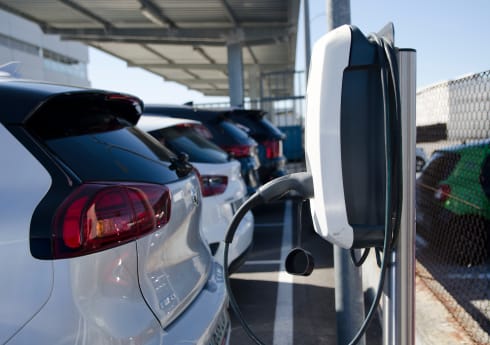EV Battery Life and Losses During EV Battery Charging Guide
EV drivers know a lot about charging up electric vehicles. But did you know there are losses during EV Battery charging? In this feature, we’re looking at EV battery life and the journey it takes during an EV’s lifecycle.

EV battery life: The basics
Like with traditional vehicles, electric vehicles have a certain shelf life. And the same goes for the battery in your EV.
Manufacturers usually make these out of lithium-ion, although other raw materials are put to use as well (like copper and iron). Metals such as cobalt, nickel and manganese are also added, then elements like graphite (and the fabled lithium-ion).
Many smartphone manufacturers use lithium-ion to make mobile batteries, so it’s a common component and one we’re all used to.
It’s in high demand, but as an EV driver you need to treat the batteries carefully. You can’t charge your vehicle any way you see fit and presume that’s brilliant, the thing will be running for 20 years.
But with the right approach, you can make sure your EV will be getting you from A-B for many years ahead.
How long will EV batteries last?
Although it depends on your EV model, most electric vehicle batteries will last for around 100,000 miles. In fact, most EV batteries will outlast your electric vehicle!
Keep in mind how you drive, and charge, your EV can extend the life of your battery. And we’ve got something handy to help you out with that…
iCompario tip: Keep in mind the best EV battery charging practices
If you want to maximise (and even extend) the life of your battery, take a look at our guide to the EV battery charging best practices. You’ll find there the top tips to managing EV charging to avoid battery degradation.
The importance of EV battery recycling
Many motorists are buying, or hiring, EVs now because they’re thought of as miles better for the environment. They’re a real eco-boost for any business’ PR.
However, key to that ongoing outlook is EV battery recycling.
Most manufacturers already do this. When an EV battery is spent, it’s broken down and the raw materials are used again. But EV usage will go through the roof over the next 10 years—there’ll be many more batteries to recycle than at the current rate.
Will the EV industry be able to match that? Well, we’ll find out in time. There are ingenious engineers at work across the industry and we can expect significant advances to look forward to.
How EV battery technology is advancing
Electric vehicle technology is advancing rapidly every year. We can all expect to see major changes over the next decade.
One of the most exciting prospects is in solid-state EV batteries.
They’re likely to be a big game-changer for EVs. What these are is a standard EV battery, but the polymer substrate used in the manufacturing will be replaced by solid substrate. It has the potential to add more capacity and range to EV batteries.
So, yes, they’re not available yet!
However, huge manufactures like Honda are working on this technology and expects to launch the batteries around 2028. Watch this space!
Losses during EV battery charging
Okay, now you know more about EV batteries. But what about the energy losses that take place during any charge? Well, it’s worth understanding what’s going on.
When you’re sorting out EV business solutions, energy losses while charging should be far down your list of concerns.
It’s not a huge problem. But it is a problem nonetheless! As we’ll cover later, it’s an issue that’ll improve alongside technological advances in the years ahead. But for now, the main areas of energy losses from charging EVs are from the:
- Onboard charger.
- Cable.
- Charging power.
- EV battery.
- Weather.
How do these energy losses take place, then? Well, we’ve got a handy five-point breakdown of each area so you’ll be in the know.
1. Onboard charger losses
The #1 energy loss? From an EV’s onboard charging unit. Depending on the model you have, these can range from 75% to 95% in efficiency.
Losses vary then, but why does it happen anyway?
Well, the onboard charger converts AC (alternating current) power to DC (direct current). That process heats things up, which is why when you charge a phone or laptop they also got hot. The same thing is happening!
However, that heat isn’t a great thing. Your EV has cooling devices that kick into action, which results in lost EV battery charging energy.
There’s not much you can do about it, other than turning off the cooler, but that’s not advisable as it can damage components in your EV.
2. Charging cable losses
The charging cable (tethered or untethered) is also responsible for energy losses. What makes a difference is the length of the cable. Simply put:
Short cable? There’s lower resistance and you’ll lose less energy.
Long cable? You’ll be losing more energy.
Keep that in mind when you’re picking a charging point for your employees or workplace. Make your choice wisely!
As you need to pick the most suitable option that’ll match your drivers’ needs (by which we mean don’t just pick a short cable for the sake of it, because that can make your drivers’ recharging needs more difficult).
3. Charging power losses
Superfast charging also results in energy losses. If you’re blasting away at 22kWh, that’ll result in lost electricity.
There’s a way around this, though, and that’s to get an ultra-thick cable. That cuts down on excessive heat. If you want to charge at fast speeds, then make sure you’ve got a cable that matches your needs.
4. Battery losses
Most EVs use lithium-ion batteries. These lose heat when converting electricity into chemical energy, which causes losses.
To make a difference, you can charge your EV on a standard setting. Superfast charging speeds may be more convenient, but they do lose you energy (and degrade your EV battery life). So, it’s in your best interests to charge steadily.
It’ll save you money and help protect your electric vehicle.
5. Weather losses
If it’s blisteringly hot, or freezing cold, this will result in EV charging losses.
To get around that, you can take steps like using pre-conditioning features to warm up your battery on a cold day. That’s prior to a charge, which’ll put it at optimum performance.
For sweltering heat? Keep your EV parked in the shade! That means, if possible, locate your charging points in covered areas. It may seem like a faff, but in the long-term you’ll save money and protect your EVs.
Can you do anything about EV battery charging losses?
You can follow the EV charging best practices to make the most of your battery life. Plus, make sure your charging point is fitted out with the right gear—remember, cable length and thickness can impact on charging losses.
If you focus on getting that right, then you can limit the energy loss.
However, you’re always going to lose some of it. That’s a fact of EV ownership right now, just remember it’s not a terrible problem and all the perks of owning an electric vehicle outweigh the losses mentioned above.



